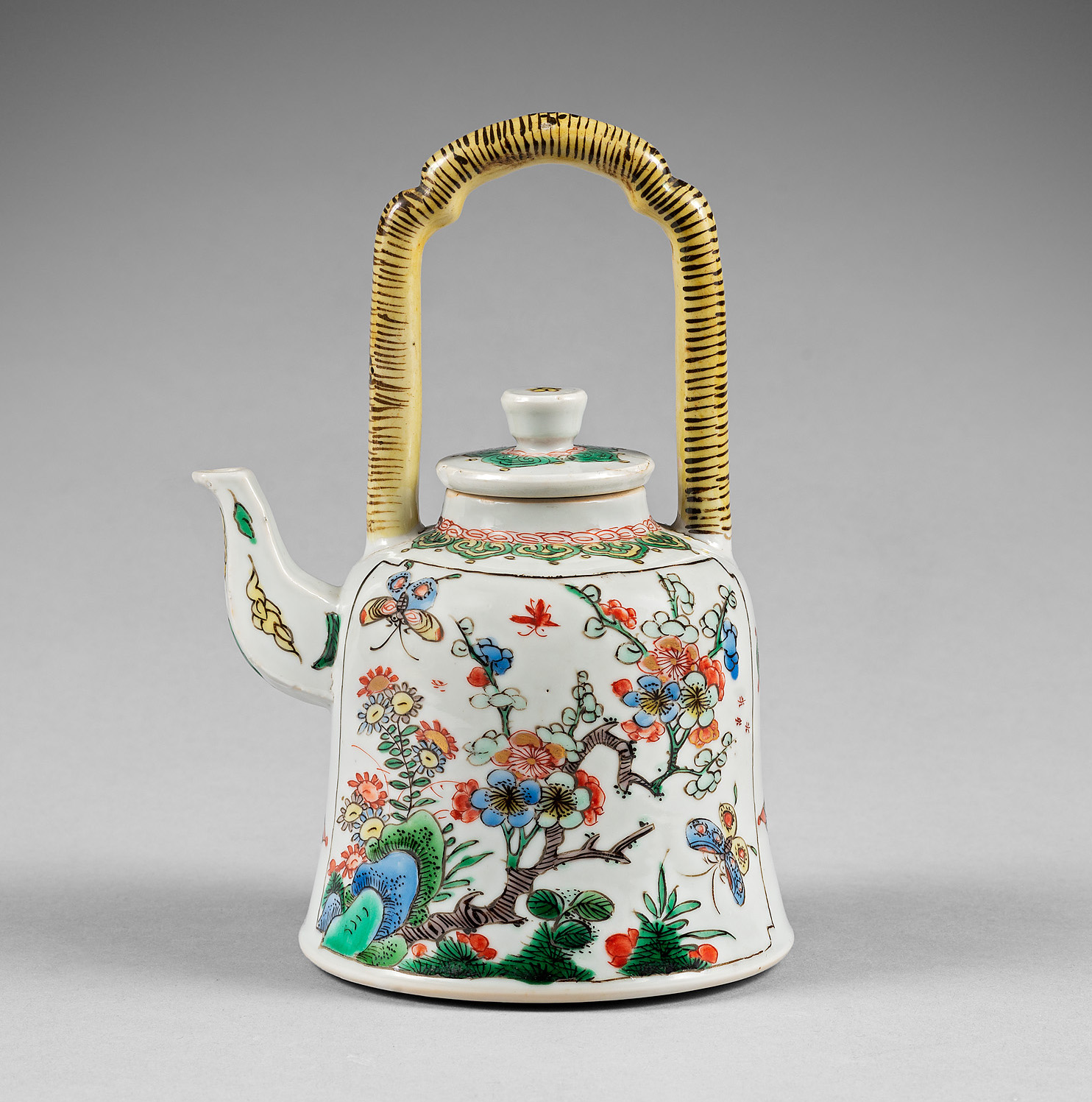


A pair of Chinese Export Porcelain “Judgement of Paris” plates. Qianlong
Decorated in famille rose enamels, the centre depicting Paris wearing rose drapery, holding a staff, seated on an iron-red rock beside his recumbent hound, offering a golden apple to Venus flanked by Juno and Minerva, with Cupid seated at their feet, a border of gilt spearhead on the rim.
- Country:
- China
- Period :
- Qianlong (1735-1795), circa 1750/1760
- Material:
- Porcelain
- Dimension:
- 8.85 in. (22.5 cm)
- Reference :
- C819
- Status:
- available
Notice
The story depicted on this piece is the origin of what resulted in the Trojan War according to one version of Greek mythology. The goddesses Hera, Aphrodite, and Athena were squabbling over who was most beautiful. Paris, a prince of Troy, the son of Priam and the world’s post handsome man, was given the task of judging among them in order to bestow the prize, the golden apple of discord inscribed with the legend kallisti (for the fairest one). Ever since its earliest depictions, this particular subject has been treated repeatedly in many media.
The original visual source for this version of The Judgement of Paris has traditionally been ascribed to an engraving of a painting presently in the National Gallery after Peter Paul Rubens (1577-1640). It has also also been suggested that the design was based on an engraving by Marcantonio Raimondi of c.1510 -1520, which he made after the painting by Raphael. Raimondi’s print subsequently inspired a number of later treatments in print media as well as on canvas, in particular one by Peter Paul Rubens now at the Prado.
Many different versions of this Chinese Porcelain pattern occur, using different colours schemes, arrangements of the scene, as well as numerous border styles, including one with views of Plymouth. The central scene does not vary much, unlike the border designs. It is therefore more than likely there were several different Chinese export porcelain services produced over a number of years reinterpreting this design, the period of production ranged from the mid 1740`s to possibly as late as the 1760`s.

























